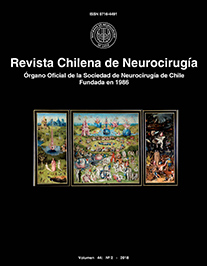Clinical and epidemiologic characterization and follow-up of children with central nervous system tumors
##plugins.themes.bootstrap3.article.main##
Abstract
Objective: To evaluate distribution, initial clinical presentation and survival rate of children with central nervous system tumors
treated in a capital city of Northeast, Brazil. Method: This is a prospective study, which includes patients aged under 19 years
admitted between July/2011 and July/2013. Results: The approximate mean annual incidence of pediatric CNS tumors in Sergipe was 22.4 cases per 1,000,000 children and adolescents per year. The mean age was 7.68 years, 67.6% were female and 76.5% non-whites. In 79.4%, headache and vomiting were present at first clinical evaluation, in the majority associate with neurological deficits. The cerebellum was the most affected anatomic structure (32.4%). The infratentorial compartment was compromised in 50% of cases. Associated morbidities were more frequent in the supratentorial compartment (p = 0.015) and the most frequent histological types were pilocytic astrocytoma (23.5%), diffuse intrinsic pontine glioma (17.6%) and 11,8% medulloblastoma, craniopharyngioma, ependymoma, each. Surgical resection was possible in 70.5% of cases, mostly without adjuvant therapy. A 12-month survival rate was 72.8% and a 24-month survival rate, 37%. Conclusion: Our sample hasdemographic, histopathological, clinical and a 12-month survival rate similar to other studies. The decrease in the 24-month survival rate may be due to brain stem tumors found on our sample.
##plugins.themes.bootstrap3.article.details##
central nervous system, cancer, child, survival








